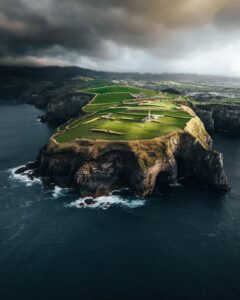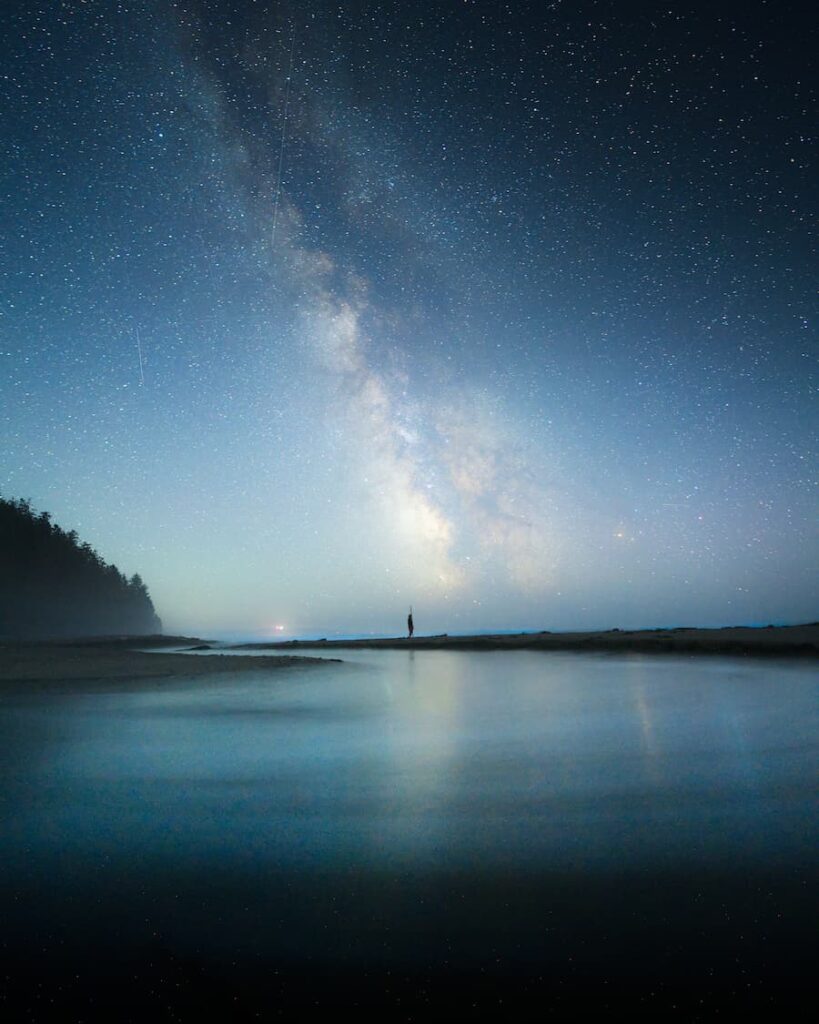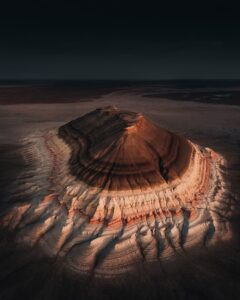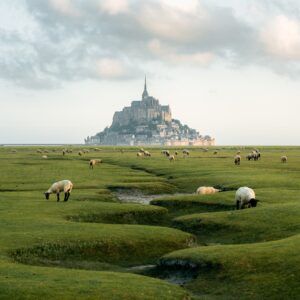
Photo tour in Azores, Portugal
Join us in the Azores for a unique photo tour, where you’ll elevate your creative skills with expert guidance from Ronald Soethje, Bruno Ázera, and Nomadict.
This article chronicles Mitchell Leong’s journey, who found solace and purpose through his lens. From the rugged expanses of the Canadian Rockies to the ethereal allure of starlit nights, each photograph tells a story of resilience, exploration, and the profound impact of the natural world. Through his lens, he seeks to bridge the gap between science and art, using photography as a tool for conservation and storytelling. Along the way, he shares invaluable lessons learned, from embracing fear to trusting in the power of storytelling.
I wasn’t born into this, much like many others. Photography had never even crossed my mind when I was young. It began when I was in a bad place, both emotionally and physically, at a time when I felt like a lot was going wrong in my life.
When it was time to get back on my feet, I let my heart decide what I should pursue instead of what everyone else thought I should. That’s when I felt compelled to spend more time in nature. Photography came shortly after.
I loved the vast landscapes, fragile ecosystems, and intimate moments. It sparked the creative side I needed to share with the world. Ever since I took my first shot, it’s been an unexplainable feeling at times. Whenever I have the camera in my eye, I can only describe it as a feeling of “I’m home.” I was supposed to do it. Not only that, but I also studied geology and biology at university.
As a geologist/biologist, I needed to be more effective. If I could translate science into a universal language everyone could understand, I could create a meaningful yet lasting impact. That’s where art can act as a bridge of empathy and understanding. Art and love are essentially the same; it is the process of seeing yourself in things that aren’t you. We cannot care for something we don’t understand; that’s why photography is important, and I tell stories. I want to be the voice for the places and animals that can’t communicate.
Moments and experiences that impacted my pursuit of travel and photography
I’m not superstitious, but one of the defining moments on my journey to be a conservation/adventure photographer came relatively early. I hadn’t slept well one night as I had an exam the next morning, but I could only think about shooting in the mountains. For some reason, almost possessed, I found myself driving to Banff and shooting all night with nothing but the stars overhead. I was all alone and had been shooting for a while, getting lost in the stars, when I felt something was watching me. As I turned around, a wolf not more than 20 yards away stared at me in the darkness. At that moment, I remember strangely not being scared or afraid but almost looking at myself in a mirror. A lone wolf, I took it as an omen that this process and journey of finding myself was right. From then on, I never second-guessed myself on any creative pursuit, and I always listened to the voice in my heart that this path was the right one for me.
The shot that means the most to me was one I shot on assignment for Canada. I quickly became obsessed with mountaineering, and one of the highest mountains in Banff was calling my name. I had first climbed it in the day, but I had a vision at the summit of standing on the edge with nothing but stars racing above my head and clouds flooding the valleys in the middle of the night. I had burned that image into my mind and couldn’t let it go until I got it. It was a full year of waiting and planning to bring that shot to life; it was undoubtedly the most challenging day I have ever had in the mountains. Climbing one of the tallest mountains in pure darkness, surviving the extreme colds at the top with little to no sleep for a few days. That shot means more to me than any I have made because I learned that, above all else, it’s important to believe in yourself.
Four valuable lessons I have learned along the way
1) Fear is a mile wide and an inch deep. Remembering that “I’ll be dead soon” is the most important tool I’ve ever encountered to help me make the big choices in life. Almost everything, including external expectations, pride, fear of embarrassment, or failure, dissolves in the face of death. I am reminding you what is truly important. Remembering that I am going to die is the best way I know to be vindicated from the trap of thinking I have something to lose. You are already vulnerable. There is no reason not to follow your heart. So go for it. It’s not about living forever; it’s about living with yourself forever.
2) Create and build a solid foundation for why you shoot in the first place. I don’t consider myself a storyteller or even a photographer first. Instead, a naturalist and conservationist have the privilege and opportunity to tell stories visually. Finding your ‘why?’ gives meaning to when you bring the camera to your eye. You begin to see things differently in a different light, and those pictures you’ve been taking are no longer just pictures. Oh, and that algorithm? Forget it. It doesn’t matter if storytelling changes; what matters is if we let storytelling change us.
3) Don’t baby your gear. That isn’t a sign to treat your gear poorly, but we can’t forget the most important thing, which is the ‘moment’ wherever that is, whenever that is. Know your gear well so that it becomes an extension of who you are so that when you’re on location and the moment arises, your gear is less of a distraction and more of an asset. The ‘moment’ should be treated as gold, whether you’ve burned it into your psyche beforehand or watched it unfold in front of your eyes for the first time. You often only ever have one chance before it’s gone forever. Capture it well. Trust your gear will do the job so you can focus on being present.
4) Publish pictures, not excuses. It isn’t a negative or bad thing to be positively obsessed. This mindset could involve extensive research of your location and the behavior ecology of the animal you’re tracking or honoring cultural ethics of shooting sensitive topics. For example, if you want to be an adventure photographer and climb mountains in the middle of the night, you’ll have to train like a mountaineer, act like a geologist, and think like an artist. When I’m on location, I don’t want my main concern to be, “Will I make it there because I didn’t prepare enough mentally or physically?”. Your main concern should be the story you are about to tell.
The trip to the coast was a chance for me and the team to travel to a legendary, world-renowned place. We were extremely blessed by the weather every night. We had extremely warm weather with little clouds or rain and many clear nights to stargaze. I love staying up late because it is a time when you truly feel connected with yourself and the land. There are no distractions. Astrophotography also gives an ethereal sense and evokes many emotions so I couldn’t pass up pristine shooting conditions.
I use a human element in my frames to give context and a sense of relation and possibility. I like to use silhouettes of people in particular because I want anyone of any age, race, religion, or gender to say, “That can be me. I can see these places; they aren’t restricted to a certain cohort.”
The use of motion in the image, in this case, the water flowing in the foreground, gives further context to the environment. It provides a good leading line for your eye to meet the subject in the middle of the frame. I also wanted the Milky Way to lead your eyes to the subject in the middle while still having some negative space with the number of stars so the frame wasn’t so busy.

On Editing
I must keep the final edit as close as possible to how I saw the frame with my own eyes, of course, within reason, and it’s important as an artist to put your unique spin on things, as I do. But I want people to fall in love with the way nature is, to wander and understand that the world is that beautiful. Realism must be a huge part of it. I want it to be natural and for people to fall in love with the real thing, not a synthetic version of it.
Vital steps
I chose natural hues. Cool white balance helped achieve that, especially in a coastal setting.
However, I needed to find the right balance between not super-blowing out the highlights and completely losing the shadows, or else the image would have too much contrast.
I had to take my time to correct the exposure, which I normally start with, and then work my way back to highlights, shadows, and hues last. I do that because I know what the natural hues will be like, and I try to mimic them to a certain extent. But sometimes, you don’t nail exposure in the camera, so my main focus from the beginning is to allow my workflow to be smoother. Correcting for exposure first also lets you see the photo’s dynamic range, and there could be colors and details you can pull back after.
My very first big assignment was for Canada
I remember it like it was yesterday. The company approached me on a random Wednesday and said we wanted to do a story on the Canadian Rockies and you with full creative reign and no limitations. It is a dream assignment because how often do you create something from the heart in the place you love the most? An opportunity to collaborate on something much bigger than you and for a story and photographs to live on forever is a dream come true. For the story, I worked with my climbing team, individuals I trust with my life, and we got extremely close after the assignment because it felt like we all completed it and not just myself. I told the story through the point of view of my present self, guiding my younger self through the mountains, explaining how we lost everything we ever loved and how the hills saved our lives.
Having this bump of affirmation, to say, “You’re on the right track,” was incredible. It was just nice to be appreciated for who I am and who I have become. Not only that, but it has been a stepping stone to further projects and collaborations. It has allowed me to make a name for myself locally, and doors have started to open more and more because people know your work. I will always be extremely grateful for that project.
Future ambitions
The continued evolution of ‘content creation’ and algorithms is a never-ending process. So, I think it’s important to adapt but not lose yourself in the process. Do not let the algorithm decide whether or not you become a content creator or photographer, whether you post a photo, a carousel, or a reel. Shoot and edit how you want.
I want to give back as much as I can with my gift. As I said, I got into photography because I am a naturalist and conservationist at heart. When I’m on my deathbed, I will not be remembered for the accolades or awards but for my conservation wins regarding how much positive impact I left behind. Those are the true wins; I will do whatever it takes to get there. I want to work with non-profit organizations to spread awareness and educate others on the environment’s declining health. I want to work with like-minded conservationists and athletes in the field to bring people out into nature so that they can experience how beautiful the planet is. I want to publish old photo books so the next generation can fall in love with photography and the natural world. Suppose the next generation doesn’t grow up experiencing nature and appreciating it. They won’t truly understand it; if they don’t understand it, they can’t protect it. I want to do good with my superpowers because I know I can change the world someday.

Join us in the Azores for a unique photo tour, where you’ll elevate your creative skills with expert guidance from Ronald Soethje, Bruno Ázera, and Nomadict.

In this article, Forest shares how years of chasing scale, silence, and raw landscapes shaped his approach to photography, from the deserts of Kazakhstan to the volcanic ridges of Iceland. He talks about how he uses light, texture, and vast negative space to create images that feel both intimate and overwhelming.

Simon shares the journey behind his photography, from early inspirations to field techniques, editing, and the story of the winning shot that shaped his path.

In this article, Miro shares how his love for cinematic music evolved into a deep passion for photography and how he uses light, color, and atmosphere to turn the streets of Prague into living film scenes.

In this article, Stefanie reveals how her background in physics sparked her passion for astrophotography and how she blends science with creativity to capture the beauty of the night sky. Readers will discover her approach to color, contrast, and editing, as well as her aurora photography workflow.

Spanish photographer Yhabril captures the profound connection between humans and the mountains that shaped him. Growing up in the Pyrenees, his work bridges outdoor sports, landscapes, and celestial scenes — often blending athletes, moonlight, and wilderness into striking visual stories.

In this article, Ariane shares how photography helped her navigate personal challenges, connect authentically with people and animals, and develop a philosophy rooted in empathy and artistic freedom. Readers will also discover her ethical approach to wildlife photography and her trusted equipment for both camouflage techniques and cameras.

Discover how to photograph Dutch tulip fields in their most magical light. From choosing the right gear and lenses to mastering composition, color, and aerial perspectives, this guide shares creative techniques to capture the beauty of the Netherlands’ tulips. Learn how light, color grading, and proportion bring emotion into every frame.
